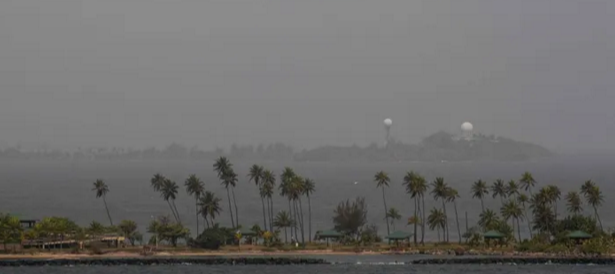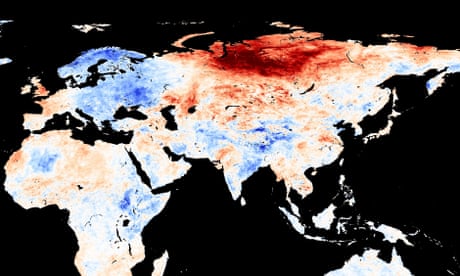‘Godzilla dust cloud’ from Sahara blankets Caribbean on its way to US

Associated Press From The Guardian
Air quality sinks to hazardous levels as biggest cloud seen in a generation swamps region after transatlantic journey
A vast cloud of Sahara dust is blanketing the Caribbean as it heads to the US with a size and concentration that experts say hasn’t been seen in half a century.
Air quality across most of the region reached record “hazardous” levels and experts who nicknamed the event the “Godzilla dust cloud” warned people to stay indoors and use air filters if they had them.
“This is the most significant event in the past 50 years,” said Pablo Méndez Lázaro, an environmental health specialist at the University of Puerto Rico. “Conditions are dangerous in many Caribbean islands.”
Many health specialists were concerned about those battling respiratory symptoms tied to the coronavirus pandemic. Lázaro, who is working with Nasa to develop an alert system for the arrival of Sahara dust, said the concentration was so high in recent days that it could even have adverse effects on healthy people.


Extremely hazy conditions and limited visibility were reported from Antigua down to Trinidad & Tobago, with the event expected to last until late Tuesday. Some people posted pictures of themselves on social media wearing double masks to ward off the coronavirus and the dust, while others joked that the Caribbean looked like it had received a yellow filter movie treatment.
José Alamo, a meteorologist with the US National Weather Service in San Juan, Puerto Rico, said the worst days for the US territory would be Monday and Tuesday as the plume heads toward the US south-east coast. The main international airport in San Juan was reporting only 8km (5 miles) of visibility.
The mass of extremely dry and dusty air is known as the Saharan Air Layer and forms over the Sahara desert. It moves across the North Atlantic every three to five days during the northern hemisphere’s late spring to early autumn, peaking in late June to mid-August, according to the US National Oceanic and Atmospheric Administration. The layer can be 3km thick, the agency said.
The Guardian says “Since you’re here …”
… we have a small favour to ask. You’ve read 13 articles in the last nine months. And you’re not alone; millions are flocking to the Guardian for quality news every day. We believe everyone deserves access to factual information, and analysis that has authority and integrity. That’s why, unlike many others, we made a choice: to keep Guardian reporting open for all, regardless of where they live or what they can afford to pay.
As an open, independent news organisation we investigate, interrogate and expose the actions of those in power, without fear. With no shareholders or billionaire owner, our journalism is free from political and commercial bias – this makes us different. We can give a voice to the oppressed and neglected, and stand in solidarity with those who are calling for a fairer future. With your help we can make a difference.
We’re determined to provide journalism that helps each of us better understand the world, and take actions that challenge, unite, and inspire change – in times of crisis and beyond. Our work would not be possible without our readers, who now support our work from 180 countries around the world.
But news organisations are facing an existential threat. With advertising revenues plummeting, the Guardian risks losing a major source of its funding. More than ever before, we’re reliant on financial support from readers to fill the gap. Your support keeps us independent, open, and means we can maintain our high quality reporting – investigating, disentangling and interrogating.
Every reader contribution, however big or small, is so valuable for our future. Support the Guardian from as little as $1 – and it only takes a minute. Thank you. Support the Guardian
For more on this story, video and to donate go to: https://www.theguardian.com/world/2020/jun/23/godzilla-dust-cloud-from-sahara-blankets-caribbean-on-its-way-to-us





